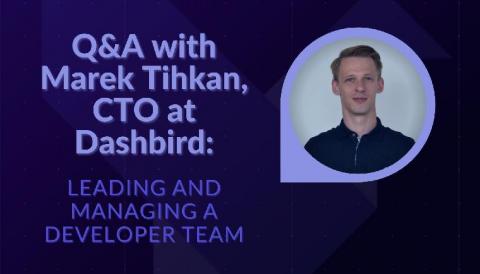Q&A with Marek Tihkan, CTO at Dashbird: Leading and managing a Developer team
As we enter into our 4th year, we've decided to get up close and personal with our team to share with you their passion, drivers, lessons learned and significant moments of the past year. We're a young company dedicated to adding value in all corners that we reach, so we hope you find the upcoming series useful! Hey Marek, so can you tell us how long you’ve been at Dashbird and where you were before? M: I’ve been at Dashbird for two years now.








